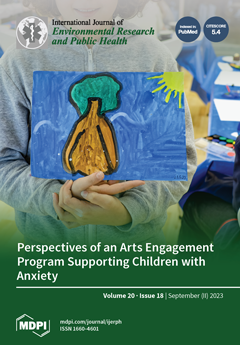Open AccessArticle
Reaching the Frail Elderly for the Diagnosis and Management of Atrial Fibrillation—REAFEL
by
Carsten Bamberg, Caroline Thorup Ladegaard, Mathias Aalling, Dorthea Marie Jensen, Christoffer Læssøe Madsen, Sadaf Kamil, Henrik Gudbergsen, Thomas Saxild, Michaela Louise Schiøtz, Julie Grew, Luana Sandoval Castillo, Iben Tousgaard, Rie Laurine Rosenthal Johansen, Jakob Eyvind Bardram, Anne Frølich and Helena Domínguez
Viewed by 1140
Abstract
BACKGROUND: Frail elderly patients are exposed to suffering strokes if they do not receive timely anticoagulation to prevent stroke associated to atrial fibrillation (AF). Evaluation in the cardiological ambulatory can be cumbersome as it often requires repeated visits. AIM: To develop and implement
[...] Read more.
BACKGROUND: Frail elderly patients are exposed to suffering strokes if they do not receive timely anticoagulation to prevent stroke associated to atrial fibrillation (AF). Evaluation in the cardiological ambulatory can be cumbersome as it often requires repeated visits. AIM: To develop and implement CardioShare, a shared-care model where primary care leads patient management, using a compact Holter monitor device with asynchronous remote support from cardiologists. METHODS: CardioShare was developed in a feasibility phase, tested in a pragmatic cluster randomization trial (primary care clinics as clusters), and its implementation potential was evaluated with an escalation test. Mixed methods were used to evaluate the impact of this complex intervention, comprising quantitative observations, semi-structured interviews, and workshops. RESULTS: Between February 2020 and December 2021, 314 patients (30% frail) were included, of whom 75% had AF diagnosed/not found within 13 days; 80% in both groups avoided referral to cardiologists. Patients felt safe and primary care clinicians satisfied. In an escalation test, 58 primary-care doctors evaluated 93 patients over three months, with remote support from four hospitals in the Capital Region of Denmark. CONCLUSIONS: CardioShare was successfully implemented for AF evaluation in primary care.
Full article
►▼
Show Figures





